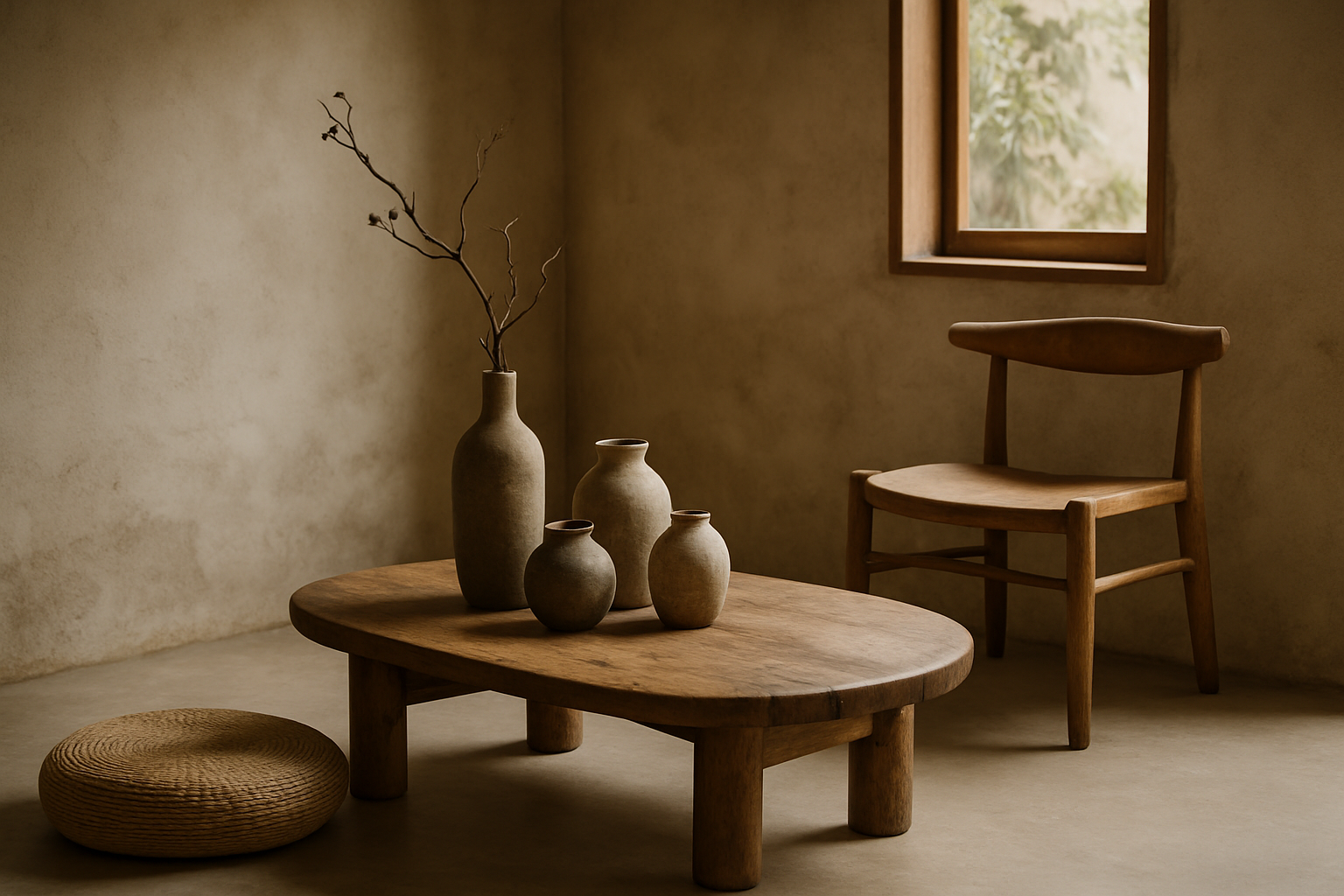Wabi-Sabi: Embracing Imperfection in Home Design
The allure of perfectly staged homes has long dominated interior design. But a new trend is emerging, one that celebrates the beauty of imperfection and the passage of time. Wabi-sabi, an ancient Japanese philosophy, is making waves in modern home decor, offering a refreshing alternative to polished perfection. This aesthetic approach encourages us to find beauty in the flawed, the weathered, and the natural, creating spaces that feel authentic, lived-in, and deeply personal.

In traditional Japanese culture, wabi-sabi manifested in rustic tea houses, asymmetrical pottery, and gardens designed to mimic the randomness of nature. These spaces and objects were valued not despite their imperfections, but because of them. Each crack, chip, or uneven edge told a story, adding depth and character to the item or environment.
Wabi-Sabi in Modern Home Design
Today, wabi-sabi is experiencing a resurgence in contemporary interior design. In a world increasingly dominated by mass production and digital perfection, this ancient philosophy offers a much-needed antidote. It encourages homeowners to create spaces that feel authentic, lived-in, and deeply connected to the natural world.
Incorporating wabi-sabi into your home doesn’t mean embracing chaos or neglect. Rather, it’s about curating a space that feels organic, evolving, and true to your life’s journey. This might involve choosing handmade ceramics over factory-produced dishes, opting for natural materials like wood and stone, or displaying objects that show signs of wear and repair.
Key Elements of Wabi-Sabi Design
To bring wabi-sabi into your home, consider the following elements:
-
Natural Materials: Favor raw, unprocessed materials like wood, stone, and clay. These materials age beautifully, developing patinas and textures that tell a story over time.
-
Imperfect Textures: Embrace rough textures, uneven surfaces, and asymmetrical forms. Hand-woven textiles, roughly hewn wooden furniture, and irregular ceramics all embody the wabi-sabi spirit.
-
Muted Color Palette: Opt for earthy, subdued colors inspired by nature. Think soft greys, warm browns, and muted greens. These colors create a calm, grounded atmosphere.
-
Minimalism with Character: While wabi-sabi shares some similarities with minimalism, it’s not about stark emptiness. Instead, carefully curate meaningful objects that bring joy and tell your personal story.
-
Weathered and Repaired Items: Don’t hide signs of wear and tear. Celebrate them. Display items that show their age or have been lovingly repaired, like a kintsugi pottery piece.
Wabi-Sabi in Different Rooms
The beauty of wabi-sabi is its versatility. It can be applied throughout your home, adapting to different spaces and needs:
In the living room, consider a low-slung sofa with natural linen upholstery, accented with hand-knit throws and pillows. A rough-hewn coffee table or a gnarled piece of driftwood can serve as a striking centerpiece.
The kitchen benefits from open shelving displaying a collection of mismatched, handmade ceramics. Wooden utensils, a well-used cutting board, and bundles of dried herbs add texture and life to the space.
In the bedroom, unmade linen bedding in soft, muted tones creates an inviting, lived-in feel. A weathered wooden headboard or a vintage ladder repurposed as a clothing rack adds character.
The Philosophy Beyond Aesthetics
While wabi-sabi offers a distinct visual style, its true power lies in the philosophy behind it. By embracing imperfection in our homes, we learn to appreciate it in ourselves and our lives. This can lead to reduced stress, increased mindfulness, and a deeper connection to our living spaces.
Wabi-sabi encourages us to slow down and appreciate the small details we might otherwise overlook. It reminds us that beauty exists not just in grand gestures, but in the quiet moments and subtle imperfections that make up our daily lives.
Sustainability and Wabi-Sabi
In an era of increasing environmental awareness, wabi-sabi aligns beautifully with sustainable living practices. By valuing aged and imperfect items, we reduce the need for constant replacement and redecoration. This philosophy encourages us to repair rather than discard, to choose quality over quantity, and to find beauty in what we already have.
Moreover, the emphasis on natural materials and handmade goods supports artisans and traditional crafts, offering an alternative to mass-produced, disposable decor items.
Challenges and Considerations
While wabi-sabi offers a refreshing approach to home design, it’s not without its challenges. In a culture that often equates newness with value, it can be difficult to embrace signs of wear and imperfection. Additionally, finding authentic, handcrafted items may require more effort and potentially higher costs than mass-produced alternatives.
However, these challenges are part of the wabi-sabi journey. The process of slowly curating a home filled with meaningful, imperfect beauty is itself an exercise in mindfulness and intentional living.
Conclusion
As we navigate an increasingly digital and perfection-driven world, wabi-sabi offers a timely reminder of the beauty inherent in the natural, the imperfect, and the personal. By embracing this philosophy in our homes, we create spaces that are not just visually interesting, but emotionally resonant and deeply comforting.
Wabi-sabi isn’t about achieving a specific look, but about cultivating a new way of seeing. It invites us to find beauty in the cracks, to value the stories told by well-worn objects, and to create homes that are true reflections of our lives and values. In doing so, we may find that our imperfect homes become perfect sanctuaries, offering respite from the polished facades of the outside world.





